
Hot Work Permit
A hot work permit is required for all non-production or maintenance work that involves cutting, welding, grinding, using open flames or producing heat and/or sparks and is not performed in a permanently designated hot work area.
This includes, but is not limited to, the use of electric, oxy-acetylene, laser or similar welding or cutting equipment, grinders, gas torches or blow torches (including electric hot-air blowers) for brazing, soldering, pipe thawing, torch-applied floor or roofing materials, or removal of materials. The permit must be posted at the work site and returned upon completion of the work.
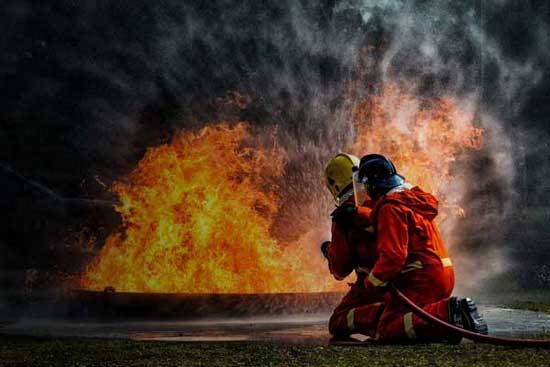
What are the risks of Hot Work?
The risk of Hot Work in a chemical plant is fire and/or explosion. Fire and/or explosion can cause injury to employees, environmental damage and/or material damage to plant and buildings. It is wise to apply the proper control measures to prevent fire and/or explosion when Hot Work is to be performed.
A bit of theory about the fire triangle
Before we get into the mandatory control measures when performing Hot Work, first a little theory about the origins of a fire or explosion.
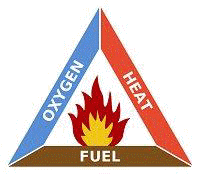
Everyone has probably heard of the fire triangle? For a fire to occur, three conditions must be present..
- Oxygen
- Fuel
- Temperature or Ignition Reference(s)
To prevent a fire and/or explosion, we must influence or remove 1 of the 3 conditions. The removal of oxygen is generally not possible and therefore cannot be influenced. At the very moment we need to perform Hot Work we introduce an ignition Reference(s). The only way not to introduce the ignition source when performing the work is: to use an alternative method. In many cases, an alternative method is not available.
The only circumstance we have any control over is the presence of fuel. The management measures prescribed when performing work is to remove or keep fuel away from the workplace.
Hot Work divided into classes
Hot Work is classified into 2 classes. The class is based on the probability of ignition of combustible material and/or combustible mixture.
↪ Class 1 Hot Work ("Open fire")Class 1 Hot Work is work in which the amount of energy released is so high that any combustible mixture present is ignited with certainty.
The following work is Class 1 Hot Work..- Grinding (metal)
- Soldering with open flame
- Welding (electric, oxyfuel)
- Working with an open flame (e.g., burning)
- Annealing pipes (with a temperature of 235°C or more)
Class 2 Hot Work is work in which sufficient energy may be released to ignite a combustible mixture.
The following work is Class 2 Hot Work..- Plastic welding
- Photo equipment
- Explosion engines
- Cathodic protection
- Electric rotary tools
- Measuring instruments
- Use of laser equipment
- Electric soldering equipment
- Applying foil with a hair dryer
- Plastic grinding and/or sanding
- Pneumatic drilling and sawing machines
- Non-intrinsically safe communication equipment
- Actions in which static electricity can cause arcing
- Non-ex-proof electrical distribution and switching cabinets and lighting
Hot Work in a zone area
Hot Work in a zone area poses an additional risk. A zone area is an environment where an explosive atmosphere may be present due to a flammable gas, liquid gas or flammable finely divided solid.
Management measures are tailored, among other things, to the zone areas that apply at the site.
The following special arrangements have been made for Hot Work in zone areas..
- No Hot Work is permitted in zone 0 or 20
- Class 1 Hot Work in zone 1 or 21 a level 2 authorization is required. This means that an approval must take place at the workplace by someone from site or plant management
Hot Work versus zone areas management measures
Control measures Hot Work Class 1 and 2 linked to zone areas
Zone 1 en 2 of 21 en 22
- Enforce 15-meter rule
- Release measurement O2 and LEL measurement
- Fire extinguisher or water hose present
- Continuous O2 and LEL measurement
- Shielding environment from sparks
- High risk work permit
- Certified fire watch
- Enforce 11-meter rule
- Release measurement O2 and LEL measurement
- Continuous O2 and LEL measurement
- High risk work permit
Unclassified
- Enforce 11-meter rule
- Release measurement O2 and LEL measurement
- Continuous O2 and LEL measurement
- Fire extinguisher or water hose present
- Shielding environment from sparks
- High risk work permit
- Enforce 11-meter rule
- No action
- Normal risk work permit
Other management measures that may apply
Hot Work is always performed on a valid work permit!
| The following management measures may also apply and should be taken if they apply.. | |
| ↪ | All cable ducts, pipes, installations and surfaces above and below the activity should be checked for potential fire hazards within an 11 meter radius of the activity. |
| ↪ | If possible; seal floors below the activity, seal open drains to limit the spread of sparks and/or fire. This includes the floor 15 meters below and around the activity. |
| ↪ | If combustible material cannot be removed, protect it with or by, welding blankets, screens or other protective measures. Take into account (changing) wind directions and floors below and above the activity. |
| ↪ | Machinery and equipment where Hot Work is being performed must be empty and clean. All flammable and combustible materials should be removed by cleaning the plant. |
| ↪ | If purging or inerting is used as a control measure, LEL measurement should be carried out before the start of the Hot Work activity to determine whether purging/inerting has been carried out effectively. |
| ↪ | If forced ventilation is used as a control measure, verify that the ventilation is effective before starting the work activity. Demonstrate this using an LEL measurement. |
| ↪ | The area where the Hot Work activity is performed should be cordoned off with tape, including below the activity. |
| ↪ | If in the area where Hot Work is being performed, conveyor belts are running or fans are on, these should be stopped to prevent accidental movement of sparks/fire. |
| ↪ | Before starting work, check that any fire alarm systems and stationary fire extinguishing systems are operational and ready for use. Hot Work must not be carried out if these systems are not operational. If they have to be switched off (for welding fumes, for example), this must be done using the bypass procedure. The Hot Work activity is then considered high risk. |
| ↪ | If the automatic fire alarm system is switched off during the activities to be carried out, this must be indicated on the work permit and it must be ensured that this system is put back into operation after completion of the work. |
| ↪ | Check for the presence of flammable gases and liquids. If work is done on a plant that contains flammable gases or liquids they must first be removed. Before releasing the installation, an LEL (<10%LEL) and an O2 measurement must be taken to determine that there is no residue of flammable gases or liquids that could cause an explosive atmosphere. |
Remark(s) of the Author...
Hot Work is a Life-Critical Procedure and indicates that Hot Work in the chemical industry, among others, is high-risk work.
The risk of Hot Work in a chemical plant is fire and explosion. Fire and explosion can cause injury to employees, cause environmental damage and material damage to the installations and buildings. It is wise to apply the correct control measures at the time that Hot Work has to be carried out to prevent fire and / or explosion.
Welding & cutting equipment must, when absent and at the end of a job
- Be left de-energized and depressurized up to the main switch/connector.
- The bottle set must be placed outside the installation during prolonged absence.
- Secure gas bottles, preferably use bottle cart.
- All equipment, cables, connections and hoses and surfaces above and below the work surface should be checked for fire hazard/defectiveness.
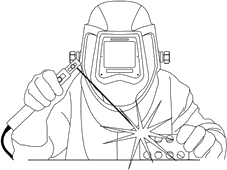
Hot Work Permit
The permit itself exists in many versions, and many companies use their own design. In the past, the permits were filled in by means of a paper version, nowadays this is often done electronically, where the software can help to correctly describe all the steps.
Related Post(s)
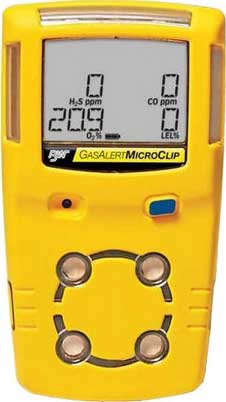
A Wheatstone bridge LEL sensor is simply a tiny electric stove with two burner elements. One element has a catalyst (such as platinum) and one doesn't...
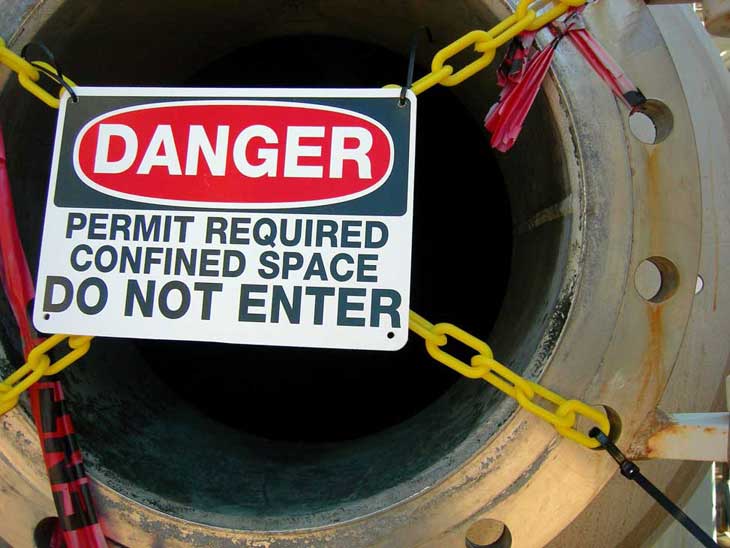
Many workers are injured and killed each year while working in confined spaces. An estimated 60% of the fatalities have been among the would-be rescuers...